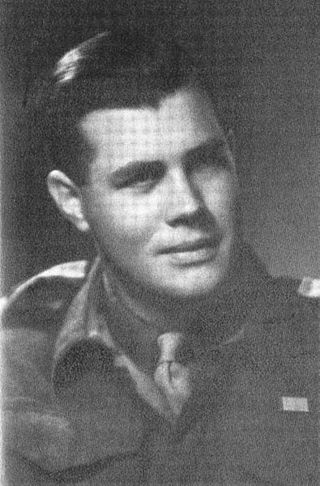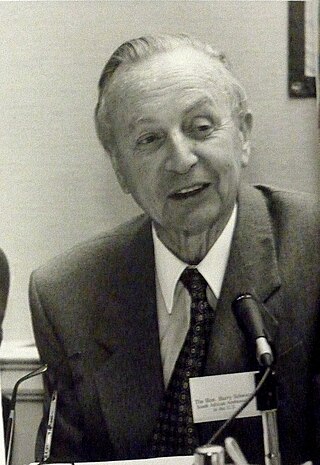The Progressive Party of Canada, formally the National Progressive Party, was a federal-level political party in Canada in the 1920s until 1930. It was linked with the provincial United Farmers parties in several provinces, and it spawned the Progressive Party of Saskatchewan, and the Progressive Party of Manitoba, which formed the government of that province. The Progressive Party was part of the farmers' political movement that included federal and provincial Progressive and United Farmers' parties.

The United Party was a political party in South Africa. It was the country's ruling political party between 1934 and 1948.
The Progressive Party was a liberal party in South Africa which, during the era of apartheid, was considered the left wing of the all-white parliament. The party represented the legal opposition to apartheid within South Africa's white minority. It opposed the ruling National Party's racial policies, and championed the rule of law. For 13 years, its only member of parliament was Helen Suzman. It was later renamed the Progressive Reform Party in 1975, and then Progressive Federal Party in 1977. The modern Democratic Alliance considers the party to be its earliest predecessor.

The Conservative Party was a far-right South African political party that sought to preserve many aspects of apartheid in the system's final decade, and formed the official opposition in the white-only House of Assembly in the last seven years of minority rule. It declined quickly after apartheid ended, before being merged with the Freedom Front in 2004.

The Progressive Federal Party (PFP) was a South African political party formed in 1977 through merger of the Progressive and Reform parties, eventually changing its name to the Progressive Federal Party. For its duration, it was the main parliamentary opposition to apartheid, instead advocating power-sharing in South Africa through a federal constitution. From the 1977 election until 1987 it was the official opposition of the country.

Randburg is an area located in the Gauteng province of South Africa. Formerly a separate municipality, its administration devolved to the newly created City of Johannesburg Metropolitan Municipality, along with neighbouring Sandton and Roodepoort, in the late 1990s. During the transitional period of 1996–2000, Randburg was part of the Northern Metropolitan Local Council (MLC).
Liberalism in South Africa has encompassed various traditions and parties.
The Progressive Reform Party was a South African party that was formed on 26 July 1975 by the fusion of the Reform Party led by Harry Schwarz and Progressive Party led by Colin Eglin. Harry Schwarz predicted that the merger would lead to a "new political dimension in South Africa".
Frederik van Zyl Slabbert GCOB was a South African political analyst, businessman and politician. He is best known for having been the leader of the official opposition – the Progressive Federal Party (PFP) – in the House of Assembly from 1979 to 1986.

Andries Petrus Treurnicht was a South African politician, Minister of Education during the Soweto Riots and for a short time leader of the National Party in Transvaal. In 1982 he founded and led the Conservative Party of South Africa whose successes among the white electorate made him Leader of the Opposition in 1987, a position he retained until his death.

Colin Wells Eglin was a South African politician best known for having served as national leader of the opposition from 1977–79 and 1986–87. He represented Sea Point in the South African Parliament from 1958–61 and from 1974–2004. Described by Nelson Mandela as "one of the architects of democracy", Eglin played a leading role in the drafting of the country's post-apartheid constitution.

General elections were held in South Africa on 24 April 1974. They were called one year earlier than scheduled by Prime Minister B. J. Vorster on 4 February. The House of Assembly was increased from 166 to 171 members. The election was once again won by the National Party, with a slightly increased parliamentary majority.
General elections were held in South Africa on 22 April 1970 to elect members of the 166-seat House of Assembly. Parliament was dissolved on 2 March and the deadline for the submission of candidates was 13 March.
General elections were held in South Africa on 30 November 1977. The National Party, led by B. J. Vorster won a landslide victory in the House of Assembly. The newly formed Progressive Federal Party, led by Colin Eglin became the official opposition. The New Republic Party, successor to the United Party, won only 10 seats, all but one of them in Natal Province. Once again, the Herstigte Nasionale Party failed to win any seats.

The New Republic Party (NRP) was a South African political party. It was formed as the successor to the disbanded United Party (UP) in 1977 and as a merger with the smaller Democratic Party. It drew its support mainly from the then Province of Natal, and tried to strike a moderate course between the apartheid policy of the ruling National Party (NP) and the liberal policies of the Progressive Federal Party (PFP).

Harry Heinz Schwarz was a South African lawyer, statesman, and long-time political opposition leader against apartheid in South Africa who eventually served as the South African Ambassador to the United States during the country's transition to majority rule.
Although the Democratic Alliance of South Africa in its present form is fairly new, its roots can be traced far back in South African political history, through a complex sequence of splits and mergers.

The Mahlabatini Declaration of Faith was a statement of core principles laid down by South African political leaders Mangosuthu Buthelezi and Harry Schwarz on 4 January 1974. It was signed in Mahlabatini, KwaZulu-Natal, hence its name. Its purpose was to provide a blueprint for government of South Africa by consent and racial peace in a multi-racial society, stressing opportunity for all, consultation, the federal concept, and a Bill of Rights. It also first affirmed that political change must take place though non-violent means. It was the first agreement in apartheid South Africa by acknowledged black and white political leaders that subscribed to such principles. Final negotiations, which embodied many of the Declaration's principles, took place between President F. W. de Klerk and Nelson Mandela in the early 1990s.
Douglas Harvey Monro Gibson is a South African retired attorney, politician and diplomat who served as South Africa's ambassador to Thailand between 2008 and 2012. Previously, he had served as chief whip of the opposition from 1999 to 2007, as chairperson of the federal council of the Democratic Party between 1997 and 2000, and as a Member of the National Assembly of South Africa between 1994 and 2008.
Wendy Robyn Alexander is a South African politician who has been a Democratic Alliance Member of the National Assembly of South Africa since November 2022.











